Springfield XD .40 S&W Pistol, 5" Barrel, Fixed Sights, Black – XD9402 For Sale
$536.99
The Springfield XD .40 S&W Pistol with a 5″ barrel is a full-size firearm engineered for optimal performance and control, ideal for both home defense and target practice. It boasts an extended sight radius for improved accuracy and quicker shot recovery. This model includes Springfield’s hallmark features, like a striker status indicator, loaded chamber indicator, grip safety, Ultra Safety Assurance Action Trigger System, and internal firing pin block, ensuring user safety. The XD’s tactical size makes it comfortable to handle, appealing to both beginners and experienced shooters, while offering versatility with various finishes, sights, and calibers.
Is the Springfield XD-40 discontinued?
Yes, the Springfield XD-40 has been discontinued.
What is .40 S&,W good for?
The .40 S&W (Smith & Wesson) cartridge is good for several purposes:
1. **Self-Defense**: The .40 S&W is popular for self-defense because it offers a good balance between stopping power and manageable recoil. It is often used in law enforcement for its ability to effectively incapacitate a threat while being suitable for a wide range of shooters.
2. **Law Enforcement**: Many police departments chose the .40 S&W for service pistols due to its improved performance over 9mm, particularly in terms of stopping power, while being more controllable than larger calibers like the .45 ACP.
3. **Target Shooting**: Some shooters prefer the .40 S&W for target practice and competition due to its flatter trajectory compared to larger calibers. It is also used in certain shooting sports where its power factor is advantageous in scoring.
4. **Home Defense**: The caliber’s effective stopping power makes it a suitable choice for home defense purposes as well.
5. **Versatility**: The .40 S&W is versatile enough to be chambered in compact, subcompact, and full-sized handguns, offering a range of options for different needs and preferences.
Overall, the .40 S&W is valued for its combination of firepower, recoil management, and availability in various firearm models.
Is 40 S&,W stronger than 9mm?
The .40 S&W (Smith & Wesson) is generally considered to be more powerful than the 9mm cartridge. The .40 S&W typically has a larger bullet diameter (.40 inch vs. .355 inch for the 9mm) and can offer greater stopping power with its heavier bullet weights. It also generally delivers more energy at the point of impact compared to the 9mm, making it a favorite choice for many law enforcement agencies and self-defense situations, where a balance between firepower and manageable recoil is desirable.
However, the 9mm is known for its higher capacity, lower recoil, and typically more affordable ammunition, which can make it a preferable option for many shooters, particularly for those looking for ease of handling and shooting accuracy in rapid-fire situations.
Ultimately, whether one is “stronger” than the other can depend on specific metrics like velocity, energy, and bullet design, but in terms of basic power and impact, the .40 S&W is generally considered stronger.
Is an XD better than a Glock?
The comparison between an XD and a Glock largely depends on personal preference and intended use. Both the Springfield XD series and Glock pistols are popular choices and known for their reliability.
1. **Ergonomics**: Some shooters find the XD more comfortable due to its grip angle and shape, while others prefer the Glock’s design.
2. **Trigger**: The XD may have a different trigger feel compared to Glock; preferences vary among shooters.
3. **Reliability**: Both are known for reliability, but Glock has a longer track record with military and law enforcement use.
4. **Features**: XDs often come with additional features, like a grip safety, which Glocks lack.
5. **Availability of Accessories**: Glocks generally have a wider availability of aftermarket accessories.
Ultimately, it would be beneficial to test both models to see which one suits your needs better.
Why did the Springfield Armory shut down?
The Springfield Armory was shut down primarily due to changes in military needs and advancements in weaponry technology. Established in 1794, the armory was a key supplier of firearms for the U.S. military. However, by the mid-20th century, the Department of Defense began to shift its focus towards new technologies and outsourced production, which reduced the need for a large national armory. Additionally, cost-cutting measures and the need to consolidate military production facilities led to its closure. The Springfield Armory officially ceased operations as a military production facility in 1968.
Can you conceal carry a Springfield XD 40?
The ability to concealed carry a Springfield XD .40 or any other firearm largely depends on the laws and regulations of the jurisdiction in which you reside or intend to carry. Here are the general steps you should consider:
1. **Check State and Local Laws**: Each state in the U.S. has its own specific laws regarding concealed carry, including what types of firearms are permitted. Some cities or counties may have additional regulations.
2. **Obtain a Permit**: Most places require a concealed carry permit or license, which typically involves a background check, fingerprinting, and sometimes completion of a firearms safety training course.
3. **Understand Restrictions**: Even with a permit, there may be restrictions on where you can carry concealed firearms (e.g., schools, government buildings, private property with posted prohibitions).
4. **Legal Responsibilities**: Make sure you are aware of and understand all legal responsibilities associated with carrying a concealed weapon.
To get an authoritative answer for your specific situation, check with local law enforcement agencies or a legal expert familiar with firearms laws in your area.
Why did the FBI stop using 40 S&,W?
The FBI shifted away from using the .40 S&W caliber in favor of the 9mm round due to several reasons. The decision was largely based on advancements in ballistic technology that have improved the performance of the 9mm round, making it comparable to the .40 S&W in terms of stopping power while offering several advantages:
1. **Recoil Management**: The 9mm produces less recoil compared to the .40 S&W, allowing for faster follow-up shots and better accuracy, especially important in high-stress situations.
2. **Capacity**: Firearms chambered in 9mm typically have a higher ammunition capacity compared to those chambered in .40 S&W, allowing agents to carry more rounds.
3. **Cost and Availability**: 9mm ammunition is generally more cost-effective and more widely available, which is an important consideration for training and budgeting.
4. **Wear and Tear**: The reduced recoil of the 9mm also results in less wear and tear on firearms, potentially extending their service life and requiring fewer maintenance resources.
5. **Improved Ballistics**: Recent developments have significantly enhanced the ballistic performance of 9mm rounds, closing the gap with the .40 S&W.
These factors collectively influenced the FBI’s decision to transition back to the 9mm round.
Is 40 S&,W more powerful than 45 ACP?
To determine which cartridge is more powerful between the .40 S&W and the .45 ACP, we can compare their general ballistic characteristics and applications.
1. **.40 S&W**:
– Typically fires a bullet weighing between 135 to 180 grains.
– Muzzle velocity range is generally between 950 to 1,200 feet per second (fps).
– Muzzle energy ranges from around 400 to 525 foot-pounds (ft-lbs).
2. **.45 ACP**:
– Generally fires a heavier bullet, commonly 185 to 230 grains.
– Muzzle velocity range is usually between 830 to 1,100 fps.
– Muzzle energy typically ranges from approximately 350 to 500 ft-lbs.
In terms of raw muzzle energy, the .40 S&W tends to have a slight edge, often achieving higher pressure levels and energy in some loadings due to its slightly smaller and faster projectile. This can translate to more kinetic energy being transferred upon impact, which some might interpret as “more powerful.”
However, the .45 ACP is renowned for its larger and heavier bullet, resulting in greater potential for penetration and stopping power, especially effective at closer ranges. This characteristic makes it a popular choice for self-defense where over-penetration is less of a concern.
Ultimately, the determination of which is more “powerful” can depend on the criteria used—whether it’s energy, size, or application. In terms of muzzle energy alone, the .40 S&W can be regarded as slightly more powerful. However, many factors like bullet type, target, and intended use can influence performance and practicality.
Why is .40 S&,W ammo so hard to find?
The scarcity of .40 S&W ammunition can be attributed to several factors:
1. **Increased Demand:** Surges in firearms purchases, often driven by geopolitical events, social unrest, or increased interest in personal protection, can lead to heightened demand for all types of ammunition, including .40 S&W.
2. **Production Prioritization:** Manufacturers may prioritize more popular calibers like 9mm and .223/5.56, which are in higher demand by both civilian shooters and law enforcement. This can result in reduced production runs for less popular calibers like .40 S&W.
3. **Supply Chain Issues:** Disruptions in the supply chain, including shortages of raw materials (such as brass, lead, and powder), can impact ammunition production and availability.
4. **Inventory Depletion:** Retailers may experience depleted inventory due to previous high sales rates, and replenishing stock can take time, especially if manufacturers are backlogged.
5. **Shift in Law Enforcement:** Some law enforcement agencies have shifted from using .40 S&W to 9mm, leading to fluctuations in demand and availability. While this might sometimes lead to surplus, it can also lead to reduced production focus, impacting retail availability.
6. **Global Events:** Events such as the COVID-19 pandemic have disrupted global manufacturing and logistics, further complicating the production and distribution of ammunition.
These factors, individually or in combination, can contribute to the difficulty in finding .40 S&W ammunition.
Why is .40 S&,W unpopular?
The .40 S&W (Smith & Wesson) cartridge has experienced a decline in popularity for several reasons:
1. **Recoil**: Compared to the 9mm, the .40 S&W tends to have a snappier recoil, making it less comfortable to shoot for some people, especially over extended shooting sessions.
2. **Capacity**: Firearms chambered in .40 S&W generally have a lower magazine capacity compared to similar-sized 9mm firearms. This reduction in capacity is often seen as a disadvantage.
3. **Advancements in 9mm Ammunition**: In recent years, advancements in 9mm bullet technology have improved its performance significantly, closing the gap between the 9mm and the .40 S&W in terms of stopping power. Many law enforcement agencies and civilians have switched to 9mm due to its increased efficacy and benefits.
4. **Cost and Availability**: Generally, the .40 S&W ammunition can be more expensive and less readily available than 9mm, making it a less economical choice for high-volume shooting.
5. **Market Trends and Preferences**: There has been a broader trend in the firearms industry towards the 9mm for both personal defense and law enforcement, driven by its balance of power, capacity, and recoil. This shift has led to the perception of the .40 S&W as less desirable.
These factors, combined with shifts in consumer preferences and industry trends, have contributed to the .40 S&W’s decline in popularity.
Which is stronger, 10mm or 40 S&,W?
When comparing the 10mm Auto and the .40 S&W cartridges, the 10mm Auto is generally considered stronger. This is due to several factors:
1. **Energy and Velocity**: The 10mm Auto typically delivers higher muzzle velocity and energy than the .40 S&W, which translates to more powerful performance. The 10mm Auto can propel a similar bullet at higher speeds, resulting in greater kinetic energy.
2. **Case Capacity**: The 10mm Auto has a larger case capacity, allowing it to hold more gunpowder. This contributes to its ability to achieve higher pressures and velocities.
3. **Purpose and Design**: The 10mm was originally designed for use in a variety of situations, including law enforcement and hunting, where maximum stopping power is desired. The .40 S&W was designed to be a more compact cartridge that replicates some of the ballistic performance of the 10mm but with less recoil and in a smaller package for better handling.
Overall, while both cartridges are effective and widely used, the 10mm Auto is generally considered the more powerful of the two.
What is the most lethal 40 S&,W ammo?
The lethality of ammunition such as the .40 S&W (Smith & Wesson) depends on various factors, including the bullet design, velocity, weight, and the specific use case or purpose (e.g., self-defense, law enforcement). Generally, hollow point bullets designed for self-defense, like the Federal HST, Speer Gold Dot, or Hornady Critical Duty, are considered among the most effective due to their ability to expand upon impact, create larger wound channels, and transfer energy more efficiently. It’s essential to consider these aspects along with penetration and expansion capabilities when assessing the lethal potential of ammo.
Does Springfield still make XD?
As of the latest information, Springfield Armory continues to manufacture the XD series of pistols. The XD product line remains part of their offerings, catering to various preferences with different models and calibers. For the most current details, it’s always best to check directly with Springfield Armory or their authorized retailers.
When did Springfield stop making rifles?
Springfield Armory stopped manufacturing rifles in 1968.
Is the Springfield XDM discontinued?
Yes, the Springfield XDM has been discontinued.
Be the first to review “Springfield XD .40 S&W Pistol, 5" Barrel, Fixed Sights, Black – XD9402” Cancel reply
Related products
Springfield XD .40 S&W
Springfield XD .40 S&W Pistol, 3" Barrel, Fixed Sights, Silver, Black – XD9822
Springfield XD .40 S&W
Springfield XD .40 S&W Pistol, 3" Barrel, Fixed Sights, Black – XD9802
Springfield XD .40 S&W
Springfield XD .40 S&W Pistol, 4" Barrel, Fixed Sights, Black – XD9102
Springfield XD .40 S&W
Springfield XD .40 S&W Pistol, 4" Barrel, Fixed Sights, Silver, Black – XD9302
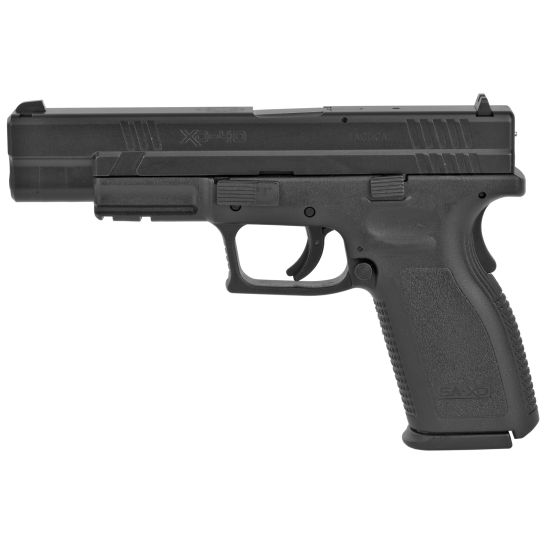
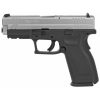
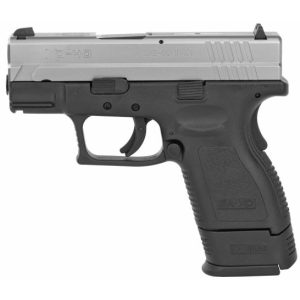
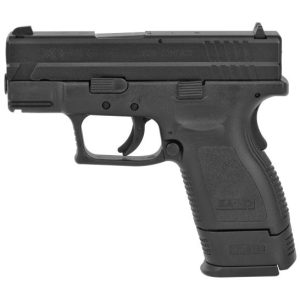
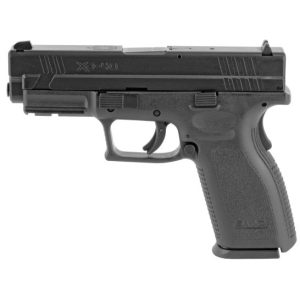
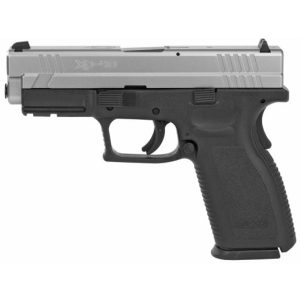
Reviews
There are no reviews yet.